Are you a Quiet Speculation member?
If not, now is a perfect time to join up! Our powerful tools, breaking-news analysis, and exclusive Discord channel will make sure you stay up to date and ahead of the curve.
This week, I’m doubling down. Modern is returning to the Pro Tour, and with that, banned list discussion is certain to resurface. I’ve chosen to get out ahead of it; my article last week speculated on a potential opportunity for Wizards of the Coast to "solve" the banning problem once and for all. Unsurprisingly, this take was pretty controversial. This week, I want to go a step further.
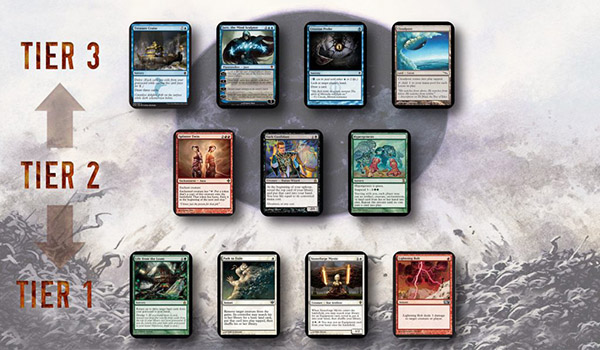
It’s easy to talk in broad terms about grand plans for the future, highlighting only the best case and ignoring the worst. I’m not going to do that. Instead, I want to take a systematic approach to the nitty-gritty, getting deep into the logistics of what a format-shaking shift might look like. This article will be speculative in the sense that we'll discuss decisions that Wizards of the Coast could potentially make, but my goal here is to outline, as specifically as possible, the theoretical approach they could choose. Farther down, I'll provide my own proposition for a rotating banlist that I believe will help to alleviate some of Modern's problems. Let’s get started.
Thesis
Modern has been plagued by bannings for the entirety of its six-year existence. Wizards of the Coast has flip-flopped regarding its treatment towards professional play, starting with supporting the Pro Tour, then attempting to remove it, then later successfully removing it, to now bringing it back. While the format is incredibly fun, stagnation is a real issue, and worries that the format under the spotlight will make things worse are prevalent. New set releases are currently the only way to introduce new cards to the format, but Wizards has to get creative to fit in cards that don’t adversely affect Standard. It is my opinion that all these issues can be solved by a policy switch from "fix-it bans" to "shake-up bans."
For clarity, here are the main arguments for and against a policy change to bannings. Entire articles can be spent on each point, so forgive me if I don’t elaborate fully here in the interest of economy.
For: No more inconsistencies from the top. Wizards' position on Modern (rumored or otherwise) has been, at best, inconsistent. Popular opinion among the community has been that WoTC considers the Modern Pro Tour as a pressure to be more hands-on regarding Modern, which some say has led to bans in the interest of a more interesting viewing experience. In 2017, we still don't really know Wizards' position, because their official language has often been non-committal and the waters are muddied with public opinion at this point. Nevertheless, uneasiness lingers among the playerbase as Modern returns to the Pro Tour, and all eyes are on Wizards’ reaction to the format, rather than, you know, the game.
For: Strategic implications. Shake-up bans would allow for seasonal shifts in the metagame, as effectively new cards are introduced and certain cards are removed, for a short while. Stagnation could be avoided entirely, as the entire format constantly adjusts to respond to new conditions. Modern would be volatile, fresh, and ripe for exploration.
For: Narrative changes. Modern is polarizing. Those who play it love it; those who don’t could care less. For years, Modern has been a format of incredible richness and character, but the discussion concerning the format has always been polluted by talk of stagnation and bannings. New players watching the Pro Tour are turned off by this discussion, souring their potential interest in the format. Change the narrative, change the perception.
For: Excitement. In my experience, playing Modern requires a sacrifice in terms of interest regarding set release. New sets are for Standard players, and 95% of the cards are irrelevant when it comes to Modern. Shake-up bans can provide a similar seasonal excitement that Standard players enjoy with every set release.
Against: Format stability. Bannings or unbannings will undoubtedly cause major shifts in the metagame, potentially turning an unbalanced situation balanced—but also likely breaking the format in some cases, at least until the next shift. Volatility goes both ways, and it will be impossible to prevent stagnation without also having the pendulum swing to the other side of the spectrum sometimes.
Against: Communication issues. The press releases from the top must be clear, approachable, and easy to understand. New players (especially younger ones) don’t like/understand being told they can’t play with certain cards. PR is an integral part of this process, as winning the hearts and minds of the players is probably more important than any logistical issue.
Against: Effects to the secondary market. This is the big one. Modern is expensive, and bannings by their nature remove entire decks from the metagame, causing price fluctuations. The current barrier to entry for the format is high, and most players only have access to a couple decks (or one). Getting hit by a ban is not fun, and wariness come ban time could create an unhealthy environment, or kill the format entirely.
There are more nuances, of course, but these are the main arguments. The positives include potential gains regarding strategy, interest, viewability, communication, and in the playerbase. The negatives include potential losses in terms of stability, player interest, and format health. Any potential shift in policy towards Modern would require specific attention paid towards timeline, communication, and the secondary market. If I were in charge, here are the steps I would take to implement this strategy.
Step 1: Establish a Banning “Rotation”
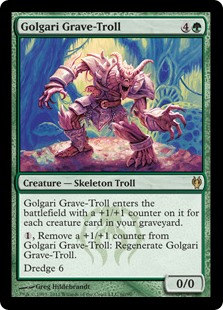 Currently, bans are indefinite. Splinter Twin is gone, and probably never coming back. Jace, the Mind Sculptor has never seen the light of day in Modern, and potentially never will. Step 1 would involve a new banlist, with a few offenders given "permanent" status, while other new bans would be temporary. A banning would occur every six months, with that ban lasting a year and a half. The exact numbers would obviously have to be tweaked, but the idea is that any banned card will return eventually.
Currently, bans are indefinite. Splinter Twin is gone, and probably never coming back. Jace, the Mind Sculptor has never seen the light of day in Modern, and potentially never will. Step 1 would involve a new banlist, with a few offenders given "permanent" status, while other new bans would be temporary. A banning would occur every six months, with that ban lasting a year and a half. The exact numbers would obviously have to be tweaked, but the idea is that any banned card will return eventually.
In this scenario, bans are more prevalent, but they are consistent, reliable, and temporary. Much of the fear regarding bans in Modern surrounds the unknown. You know, the inevitable buttclench every few months at midnight, as you peek between your eyelids and hit refresh on the B&R update webpage. If you really weighed out the options, and had to choose between an all-powerful indefinite ban-hammer that could come at any moment, or a temporary ban-slap-on-the-wrist that you could prepare for, which would you choose?
Step 2: Clear communication
 The ban list would be organized into three tiers. Tier 3 (Black) contains permanent bans; cards like Treasure Cruise, Green Sun's Zenith, and the artifact lands. To start, only cards that were banned either at the format's inception or immediately after Pro Tour Philadelphia would start at Tier 3. This means Splinter Twin could come back. Bloodbraid Elf could return. Tier 2 (Red) would be new bans, with one new card (potentially two, but probably one) added every six months, to be removed in a year and a half. No card can be banned without first being on Tier 1 (Yellow), or the Watchlist. Cards on the Watchlist are legal, but at risk of being banned. Five cards are on the Watchlist at all times, and must stay there for a minimum of three months before getting banned. Cards can move backwards and forwards on the Tier List, from Black, to Red, to Yellow, to off, and vice versa.
The ban list would be organized into three tiers. Tier 3 (Black) contains permanent bans; cards like Treasure Cruise, Green Sun's Zenith, and the artifact lands. To start, only cards that were banned either at the format's inception or immediately after Pro Tour Philadelphia would start at Tier 3. This means Splinter Twin could come back. Bloodbraid Elf could return. Tier 2 (Red) would be new bans, with one new card (potentially two, but probably one) added every six months, to be removed in a year and a half. No card can be banned without first being on Tier 1 (Yellow), or the Watchlist. Cards on the Watchlist are legal, but at risk of being banned. Five cards are on the Watchlist at all times, and must stay there for a minimum of three months before getting banned. Cards can move backwards and forwards on the Tier List, from Black, to Red, to Yellow, to off, and vice versa.
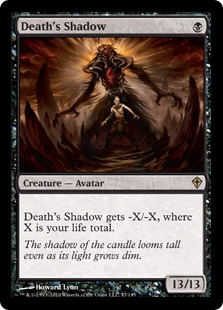 The Tier List sounds complicated, but it’s relatively straightforward and follows WoTC’s overall set release pattern. Every three months, a new set is released, and with it comes a change to the Yellow Tier. Every other set release (twice a year) we’ll see a banning, on the first and third set release of the calendar year. So, with every set release, cards can jump on and off the first Tier, but a card can only be banned every other set release. No matter what, players will always have a minimum three-month warning period before a card is banned.
The Tier List sounds complicated, but it’s relatively straightforward and follows WoTC’s overall set release pattern. Every three months, a new set is released, and with it comes a change to the Yellow Tier. Every other set release (twice a year) we’ll see a banning, on the first and third set release of the calendar year. So, with every set release, cards can jump on and off the first Tier, but a card can only be banned every other set release. No matter what, players will always have a minimum three-month warning period before a card is banned.
With each set release, Wizards would release a statement on the state of Modern, explaining what they are seeing and asking for feedback. As they aren’t “fix-it” bans, Wizards doesn’t need to act like the format police. Let the community vote on what they want to see changed. Maybe a card from the top deck is the one to go, or maybe it’s something that’s just been in play forever, like Lightning Bolt. The most important thing is communication. Don’t blindside the community, make sure their voices are heard, and explain clearly the thought process that led to the decision making. Even if people disagree, no change is permanent.
Step 3: FTV: Modern?
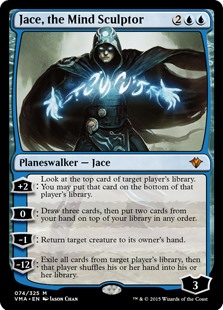 A standalone, Modern-only product that fixes secondary market considerations is a necessity. Once a year, Wizards could produce a fifteen-card standalone collection, one that contains ten already-printed copies of Modern staples (perhaps with alternate art) and five new cards for Modern play only. With this product, Wizards could kill two birds with one stone, printing extra copies of format staples along with new cards to add to the format.
A standalone, Modern-only product that fixes secondary market considerations is a necessity. Once a year, Wizards could produce a fifteen-card standalone collection, one that contains ten already-printed copies of Modern staples (perhaps with alternate art) and five new cards for Modern play only. With this product, Wizards could kill two birds with one stone, printing extra copies of format staples along with new cards to add to the format.
While Wizards does design with Modern in mind, they dedicate little attention to the format directly. They would much rather spend their time world-building and storycrafting their Standard and Draft experiences in each set release. Develop a team, in tune to the pulse of the community, that tests Modern and works to dream up new cards free from fitting into Standard’s thematic and strategic feel. Modern Masters was fine, but Modern players don’t need a unique draft experience or a ton of Commander and draft filler. Give us our sexy alt-arts, price it to sell, and make sure it actually affects prices. $8 Modern Masters packs might be a great short-term cash grab, but I’d gladly drop $100 every Christmas if it meant I was getting multiple format staples and new cards. As a final note, any card printed in Wizards’ yearly standalone should have a 12-month period of immunity from the Watchlist.
To summarize, here's my proposal:
- A banning rotation. Three Tiers, minimum three months' warning before any card is banned. Any banned card is automatically unbanned after 18 months.
- The establishment of a community watch and/or a dedicated group (in-house, or potentially a player’s committee) that tests changes, communicates with the playerbase, and releases regular updates and articles explaining the state of the game.
- A standalone solution designed specifically for Modern players, with the aim of bringing down the secondary market prices of staples and introducing select new cards to the format, outside of constraining factors like Standard and Draft playability.
Conclusion
I know it’s a scary topic. I know there are tons of questions, and potential for error. My goal with this article (and my article from last week) is to hopefully cut through most of the entrenched opinions and present a possibility. I love Modern, and I see the potential for what it could be, and an opportunity to change it for the better. Modern is returning to the Pro Tour in February of 2018, and we have a chance to use that stage to introduce something new, fresh, exciting—and yes, maybe scary—to the conversation.
Bannings are an integral part of Modern (and perhaps now Standard as well), and it doesn’t look like they’ll ever go away. Why don’t we start talking about using the bannings for good, and letting them be a positive. Thanks for entertaining my long-winded ideas. As the preacher said, “I could write shorter sermons, but once I start I get too lazy to stop.”
Thanks for reading,
Trevor Holmes


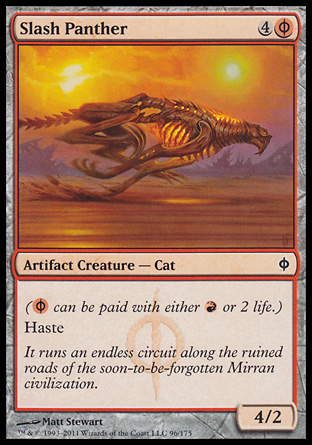
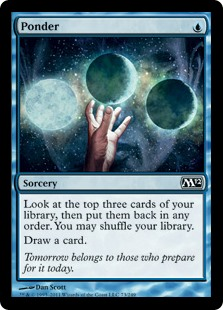


The idea of shakeup bans and unbans is fine in theory – in practice though I still say it solves a nonexisting problem. Modern isnt stagnant or stale. New cards make impacts and the format has been rattled numerous times in recent memory (ahem – eldrazi, dredge, twin, probe, push). Cards like bauble shadow and chalice went from nothing to format stalwarts.
Give me a year in which no bans or unbans happen, no standard cards make meaningful waves, and no new tech surfaces and maybe ill be interested in a paradigm of rotating and temporary shakeup bans. As is the format has been plenty dynamic enough for me. Get in your time machine and tell the infect/twin/jund era players what modern loks like in 2017 and see if they call it predictable old modern.
i actually had the same idea about the rotating ban list, I was thinking more frequent temporary bans for less time though.
What frequency did you have in mind? Interested to hear what others think about that. There’s a delicate balance between keeping the cards banned long enough that they don’t just come right back and cause the same problems, while at the same time banning them frequently enough that problem cards aren’t killing the format for too long.
I don’t think Modern is stale at all. I’ve been playing it since Khans, and it’s changed so much and quite frequently.
I don’t really like your proposal at all. However, were it to be implemented, I don’t think Wizards should print new cards into Modern bypassing Standard. If we had some kind of rotating banlist, there’d be no need for another form of shakeups.
I think this solves some of the problems facing many of the cards on the banned list that likely don’t belong there (or at least don’t belong there anymore). Perhaps instead of a forced ban cycle, we just have all bans temporary (let’s say 1 year or your 1.5 years) unless totally egregious and “Tier 3” status, as you described. That gives frustrated players of those borderline decks, or innocent ones caught in crossfire, something to eventually look forward to. At least that’s better than blindly playing the waiting game, with all motivation lost on trying to make some pile of cards replace that hole in your heart.
Exactly! I think one thing a lot of people aren’t ready to accept is that bans will continue to happen in Modern no matter how much we wish they wouldn’t. 10+ bans continuously over six years proves this. This theoretical idea would turn that cyclical negative reaction into something that people might not like at first, but WoTC could at least spin as a positive, something ‘on plan’ rather than ‘we messed up’.
I would much rather roll the dice on a slightly higher percentage of a card getting banned temporarily then roll the dice on a slightly lower percentage of that card getting banned indefinitely.
Thanks,
Trevor
The ideas here are interesting.
The shakeup ban system would be, in my opinion, better if implemented in a entirely new format.
The watchlist idea I like a lot.
If the system was used in modern:
1. I think that the time on the banlist should be established at the time of banning, either 3, 6, 9, or 12 months, depending on the card.
2. I think that banning an unfun card on a frequent but short term basis where it is banned for 3 months, watchlist for 3 months, ban 3 months would be nice. Chalice of the void, trinisphere, lantern of insight, and ensnaring bridge would all be candidates for this.
I definitely agree. Beyond just fixing broken cards (the only use for the banlist up to this point) this system could allow for interesting short-term metagames as problem cards are temporarily removed.
What would a format look like without Blood Moon? What about one without Lightning Bolt? Nobody is going to lose their minds if those cards are banned in the interest of experimentation, especially if they are just going to get unbanned again in three months (or whatever). The temporary part of the ban is essential, otherwise people with a playset of Blood Moon would get upset (irrationally) that Wizards is being cavalier with the value of their collection. Under short term temporary bans, I believe a card like Blood Moon wouldn’t move that much at all.
Thanks,
Trevor
I like the idea of being more flexible on bans. They could put banned cards on “probation” kind of like what they did with Grave Troll and as we saw even after having been banned for a long period of time, answers printed, it’s power and format warping impact it had it deserved a permanent re-banning. Unban a card for a while to monitor its impact. Look at Wild Nacatl it got unbanned and it hasn’t warped the format nor is it dominating tier 1.
As for the special Modern specific printed cards I like the idea.
RJ,
I agree, one thing I think people are missing in all of this is the increase in communication from the top, which is essential if this is going to work. I’m of the opinion that if Wizards is transparent about their reasoning, and the bans are temporary, players will be more inclined to play along. We are all conditioned to believe bans are this horrible thing that should be avoided at all costs, but the numbers don’t bear out that logic anymore. Bans are an opportunity, one that we are leaving on the table.
You are the first person to comment on new, Modern only cards! Figured this would get widespread approval. Five new cards for Modern only once a year?! Hell yeah!
Thanks,
Trevor
There’s a few issues here, if I may:
1) wizards will already have a watchlist. You couldn’t really moderate a format any other way. The difference is we don’t get to see it. I’d be down for seeing a little more of that communication to the community at large but putting my analytics head on, I feel like there could be some fallout due to me next point:
2) crowdsourcing for opinion on topics like this is generally a bad idea, because while individuals – when engaged in conversation – will often give a reasonable response, large groups (“mobs” if you will) of people are panicky, dumb, swayed by emotional pleas and make stupid decisions. Just one quick glimpse at the twitch chat for any protour or GP will show a torrent of banmania and panicking, even if the deck on show is brand new. Your average person isn’t in the position to make informed big-picture decisions regarding the banlist of a magic format, so you have to pull back to a level of a focus group or team of specialists. No public votes, it just wouldn’t work.
3) I like your “tiers of banworthiness” scale. It could work well when applied to the current banlist, just to give more clarity. Great idea. I really don’t think you need to go the extra step and introduce shake-up bans though, when the Modern format is demonstrably changeable and fluid. It doesn’t take much in an ecosystem like Modern to rock the apple cart, and there hasn’t been a point in the last two years where you could legitimately use the words “stagnant” or “stale” when describing the format, even when a few vocal individuals might like to try to convince people there’s a problem. There isn’t.
Hey Ben,
I appreciate the feedback, I’ll answer your comments in the same way:
1) I agree, communication is essential. I know they have a list of cards they are watching, they won’t let us see them because they don’t want the public fallout as people freak out over what could potentially happen. Change the narrative, change the perception. It’s time we stopped looking at bans as a horrible thing.
2) I wasn’t necessarily advocating for popular vote as the sole factor in determining cards to be banned, because you’re right. Tron, Death’s Shadow and blue cards would always be the first to go. I’m more advocating for an actual committee focused on Modern only, that listens to the community when making their decisions. The final decision would come from the community, I just want regular players’ voices heard rather than just the pros on Twitter that don’t even like the format to begin with.
3) You are probably right that Modern doesn’t ‘need’ shake-up bans. I’m of the opinion that the biggest thing that scares people about bans is the unknown; they don’t know when they are coming, and they don’t know if they will ever get to play with those cards again. That uncertainty leads to volatile changes in the secondary market, I’m of the opinnin that regular temporary bans will solve these issues (or at least significantly lessen their impact).
I’m sure there would be times when Modern is ‘great’ and nothing ‘needs’ to be banned. In those situations, they could do things that make minor impacts, like banning Blood Moon in a format where Blood Moon isn’t really affecting things. Maybe Five Color gets in the mix for a few months, maybe not? Under the system as it is now, that sort of experimentation could never happen.
Thanks,
Trevor
I think there is a major problem with your idea of a watchlist. What if something like eldrazi winter happens again, due to a card that is now untouchable for 12 months? Are emergency bannings something that could take place within your model?
Personally, I don’t think shake up bans need to occur. As for the cards that are still on the ban list but could be innocent or to help stave off unnecessary ban discussion, I believe another game’s community has created a great system to help manage it. In the Smogon community for Pokemon, there are things called “suspect tests” where a temporary environment is created that allows something banned to be tried in a tier (basically format) or try the tier without a major threat being legal before pulling the trigger completely on banning or unbanning it. After the test environment closes, the members of the community who have managed to get a high enough ranking vote as to whether the test environment felt healthier than the regular one and that decides how the tier changes.
I believe that a system like this could be implemented, but probably not perfectly 1 to 1. Doing this on MTGO would provide the easiest means of testing, and if a suspect test had its own leagues on MTGO that allowed free entry and collections to build from, it could attract a lot of people to try it. People who have performed well enough after the environment closes (I would say probably 2 to 3 months) could then cast a vote as to how they felt the format was.
This is obviously a very basic version of how it would work but personally I think it would create a connection between the Modern community (or really any format) and Wizards and would avoid blindsiding people with bans they didn’t expect (twin being a good example). It would also allow people opportunities to actually see how a format is with a controversial ban or unban in place.
You’re proposing to eliminate the defining characteristics of the format we love. Why not just play Standard instead?
Seems like a lot of risk to fix a non-existent problem. Modern is unbelievably healthy and fluid right now. There are multiple contenders for best deck each month, and a whole host of decks simmering at a level just below those top 5-10 that are plenty competitive and can easily take down a tournament in the right hands.
I could see this approach making sense if the format looked more like Legacy pre-Top banning, where you had the same clear “best deck” on top of the format for years in Miracles. But we aren’t even close to that in Modern, where the best decks are relatively fresh faces and don’t seem to be very oppressive.
As cool as this would be for those who play in high level modern tournaments and who have the money and time to constantly switch decks, I feel it abandons the majority of modern players. We play modern because decks likely will be around for a long time, making it more affordable than standard. This more frequent ban system would make decks obsolete every few months, and while that allows the meta to shift, which was your aim, it will make it less financially viable for the average modern player. Modern as a format is popular because decks stay good for a long time and we can comfortably invest in a deck knowing the likelihood of a ban is low.